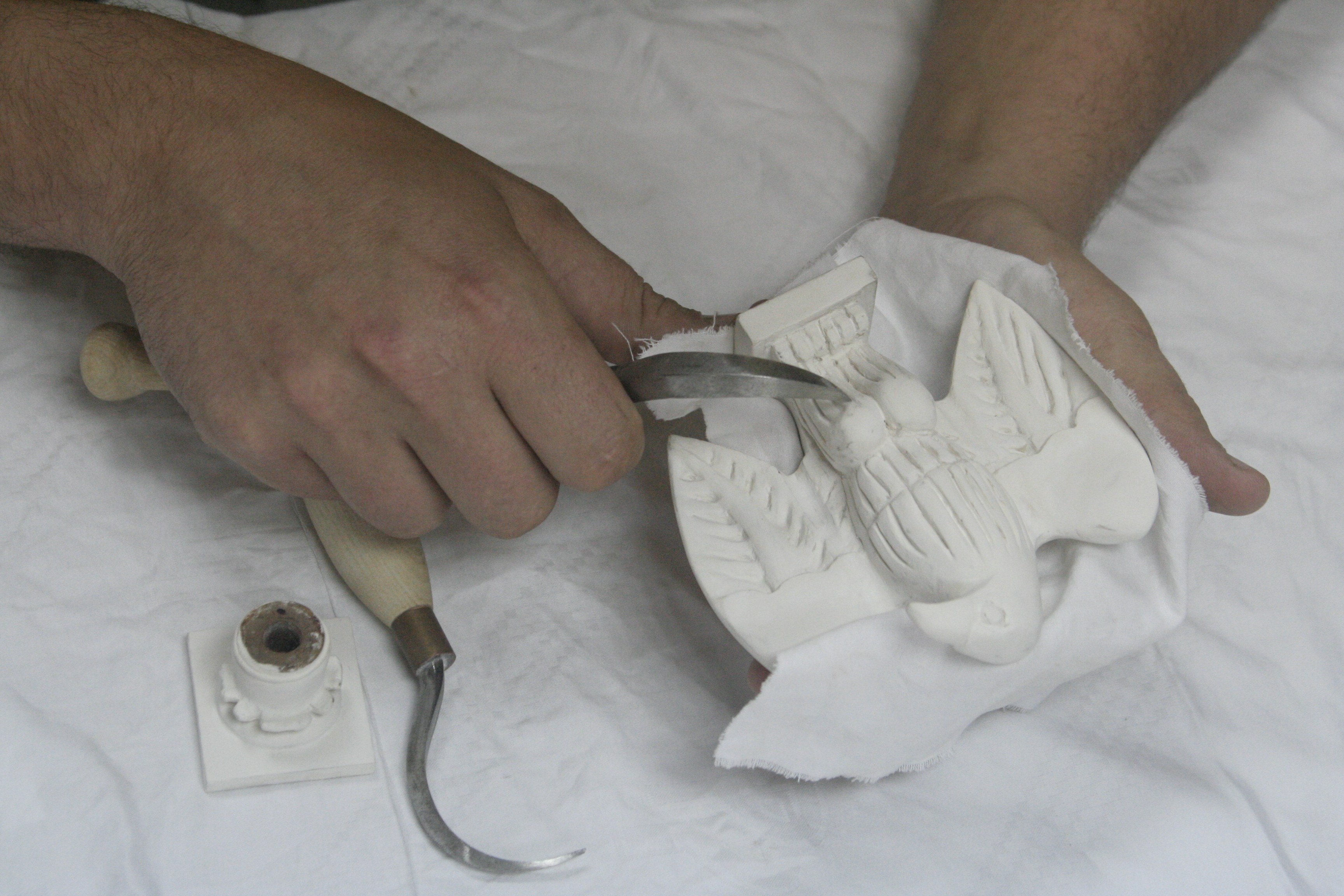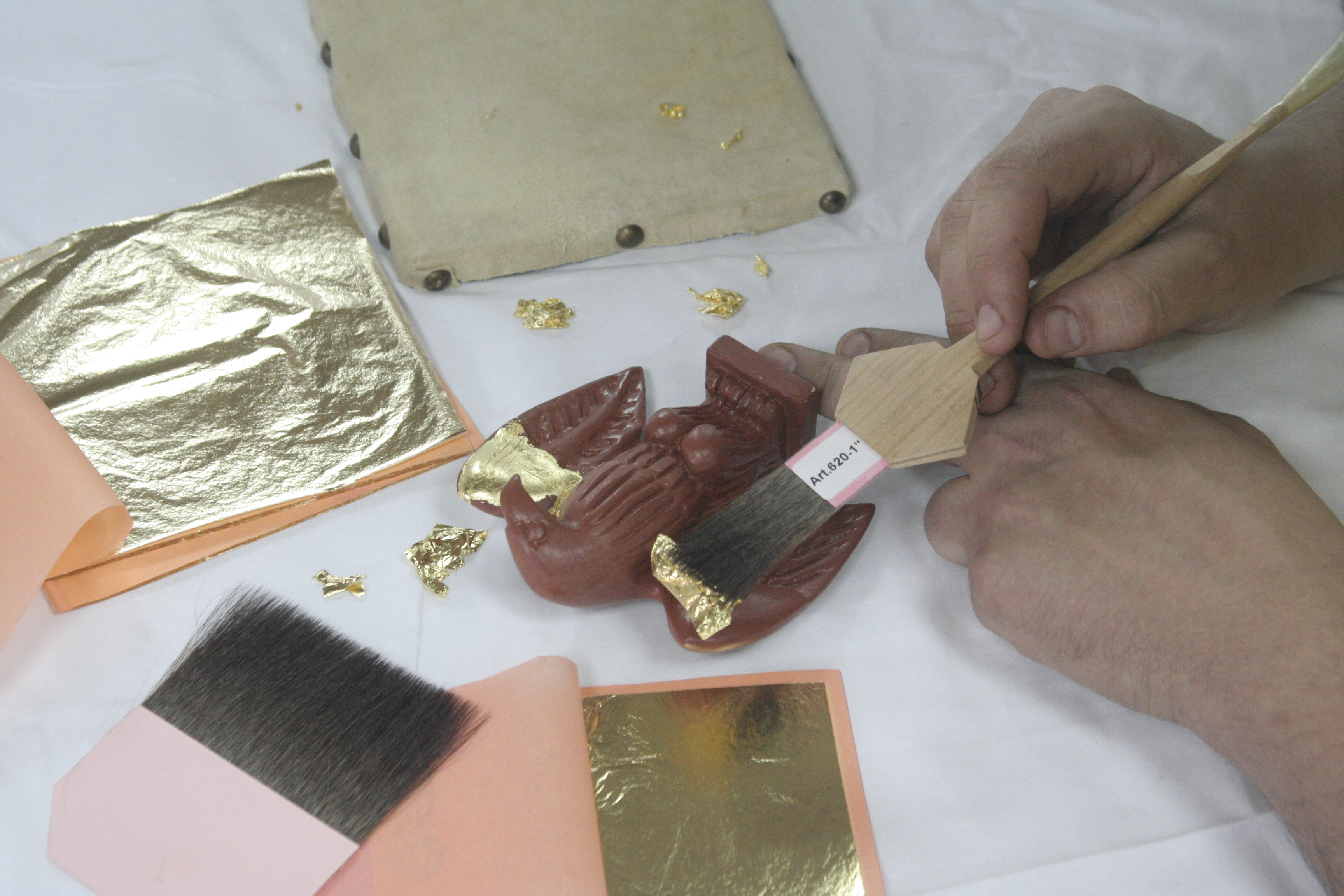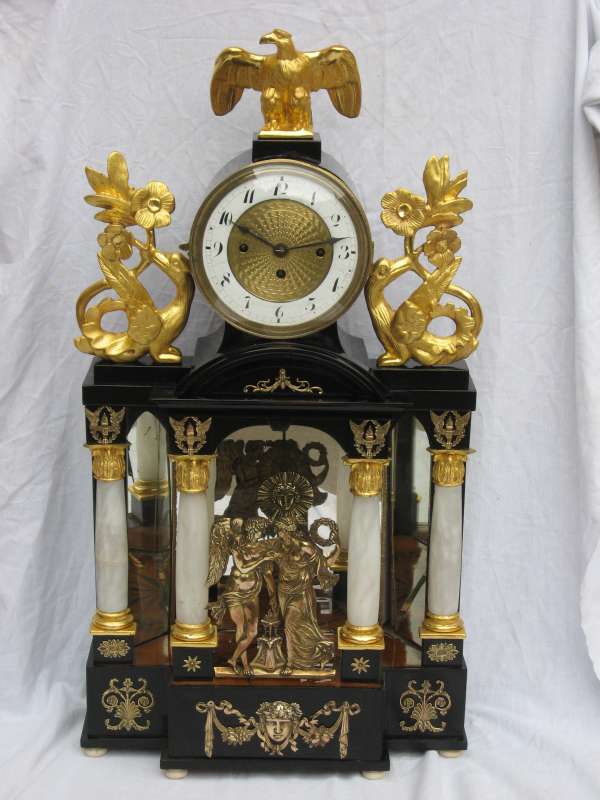Take a look under the hands of restorer – 1 part Gilding
The term gilding covers a number of decorative techniques for applying fine gold leaf or powder to solid surfaces such as wood, stone, or metal to give a thin coating of gold. Gilding has been known since antiquity, mentioned in the Old Testament and in Herodotus. Traditionally, the purpose of gilding is to achieve decorative and luxurious-looking surface, which better resists corrosion and weathering. Since ancient times cult and ritual objects are gilded.
Mechanical gilding includes all the operations in which gold leaf is prepared, and the processes to mechanically attach the gold onto surfaces. Polished iron, steel and other metals are gilded mechanically by applying gold leaf to the metallic surface at a temperature just under red-hot, pressing the leaf on with a burnisher, then reheating when additional leaf may be laid on. Gold leaf is often thinner than standard paper today, and when held to the light is semi-transparent; in ancient times it was typically about 10 times thicker than today. Restoration of gilding is now accepted discipline.
The task of the restorer in the first place is attempt to restore the original gilding. Restoration is a complex process where you must first repair the carving and chalk base. Restoration of gilding coming up in the next phase. If the original gilding too damaged or not preserved, restorer creates a new gilding, which then ultimately patinate in many ways, in order to create harmony of piece.







